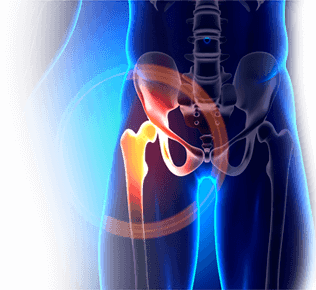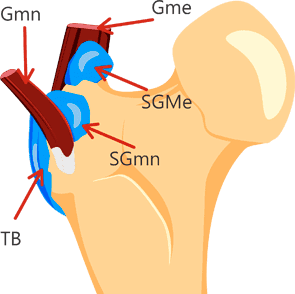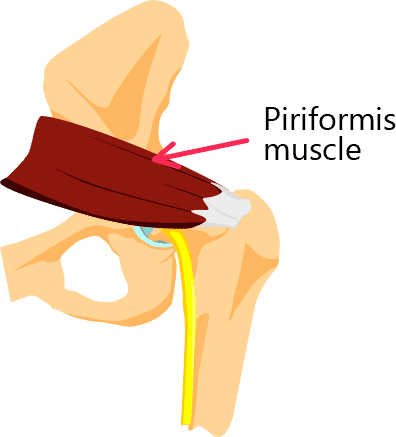
You’re a runner who jogs daily, plays soccer for an intramural team, and occasionally lifts weights. For the last two or three weeks you’ve been experiencing pain and tightness running down your side. It started out as a moderate feeling of discomfort, but now the pain has progressed to the point where you can no longer ignore it. The amount of painyou’re feeling is making it difficult to walk, and running is out of the question.
If this has happened to you, you might be suffering from a disorder of the hip or pelvis. Between 5 to 6 percent of all musculoskeletal problems in adults are because of hip and pelvic injuries. The rate of injury is particularly high in athletes because of the forces exerted on the joints during activities like running, kicking, and dancing. These injuries can destabilize the joint, spreading pain and injury to other parts of the body. For these reasons, adequate hip treatment and rehabilitation is crucial for the injured patient.
The largest and deepest joint in the body, the hip joint is second only to the shoulder in its scope and complexity. Unlike the shoulder, however, it’s extraordinary stable. While it has a slightly more limited range of motion, it compensates by being one of the sturdiest structures in the body. This sturdiness is crucial, as the hip supports the weight of much of the rest of the body.
The hip is a ball-and-socket joint, a joint formed by the convergence of the rounded end of one bone with the cup-like depression of another. In this case, the end of the femur (the thigh bone) fits into a large concave depression known as the acetabulum. The end of the femur (or femoral head) and acetabulum are covered with articular cartilage, a white, rubbery substance that absorbs shock and allows the joints to rub together without damaging the bones. This cartilage is especially thick in the back part of the socket that’s subjected to the most pressures during movements like running and walking. Deterioration of the articular cartilage, normally as a result of aging, can result in hip osteoarthritis and shooting hip pain.
The hip is a meeting place for a large number of the body’s muscles, which are generally categorized into four separate groups according to their functions. Abductors help to pull the legs away from the body, while adductors pull it towards the body. The flexor muscles, which assist the hip in flexing, include the quadriceps and iliopsoas muscles. A fourth group, the extensor muscles, includes the hamstrings, which are responsible for extension. The hamstrings and quadriceps work in tension to make activities like running and walking possible. Notably, the piriformis muscle, located in the buttocks region, can impinge on the sciatic nerve, the largest of the body’s nerves, and induce piriformis pain in hip.


For athletes, the mainnumber one cause of groin and hip pain is strain of the adductor muscle strain.muscles: the adductor longus, adductor magnus, adductor brevis, gracilis, and pectineal muscles. Of the five adductor strainmuscles, the adductor longus, which adducts and rotates the thigh, is most often injured.commonly the site of injury. Typically an adductor one or more of the adductors will suffer injurybecome injured when: (1) an athlete suddenly and dramatically changes direction; (2) when a leg undergoing abduction is forced to rotate; or (3) forceful abduction when an athlete is attempting adduction, as sometimes happens when aone soccer player tries to kick a ball and encountersmeets forceful resistance from another player kickingtrying to kick it in the opposite directionother way. In fact, soccer players and hockey players are most likely to suffer from this injury.
TheSymptoms of adductor strain include groin pain, bruising, and swelling. A patient will experience tenderness in the thigh where the affected muscles and tendons are located. Stretching may also induce a feeling of discomfort.
Another commonly injured muscle is the rectus femoris, a one of the four quadriceps muscles, is often injured. This muscle is . Crossing both knee and hip joints, the rectus femoris is primarily responsible for assisting in hip flexingflexion and knee extension. RectusMost often experienced by football and soccer players, rectusfemoris strain strikestypically occurs at the musculotendinous junction when the muscle is overstretched., often while bearing an eccentric load. Patients may experience pain, and weakness, especially when attempts to flex the muscle are resisted. They may feel a peculiar pulling sensation, and pain that radiates through the thigh.

Piriformis syndrome is often confused with sciatica, a condition with which it shares similar symptoms. Sciatica occurs whenever the sciatic nerve, which runs from the lower spine down through the legs, experiences damage. Typically this happens when a disc in the spinal column ruptures, impinging on the nerve and creating sometimes debilitating thigh hip pain.
Sciatica and piriformis syndrome are distinguished by their origins. Piriformis syndrome occurs when tension in the piriformis muscle causes the muscle to impinge on the sciatic nerve. This can happen when the muscle develops what are known as “trigger points,” hypersensitive knots of fiber that can accrue in fascia, the connective tissue running throughout the body. When pressed, these trigger points can provoke sharp, searing pain. If they begin to impinge on the sciatic nerve, the patient is suffering from piriformis syndrome.
The pain, however, is virtually indistinguishable from sciatica. One test that a physician may perform is the FAIR test, in which a patient flexes his or her upper leg while extending the lower leg. The physician will then exert pressure on the flexed leg. If the patient experiences radiating leg and side-of-hip pain, he or she is suffering from piriformis syndrome.
In the case of quadriceps strain and strain of the adductor strainlongus or other adductor muscles, treatment is largely determined by how severe the symptoms are. Following injury a physician will recommend actively resting for one or two weeks. MedicationsNon-steroidal anti-inflammatory medications are suggested in some cases to alleviate painful symptoms. TheAs the patient begins to improve, he or she should pursue a program of physical therapy to prevent the muscles from atrophying and to restore lost range of motion. It may take between two to six weeks (in the case of quad strain) or four to eight weeks (in the case of adductor strain) before the injured athlete can fully return to sports.
Patients withIn the case of piriformis syndrome have, the patient has access to a range of different options, including ice massaging, muscle relaxants, steroid injections, and shockwave therapy to release painful trigger points. They may choose to undergo physical therapy, in which the piriformis muscle is gently massaged, or perform their own stretches. They designed to stretch the muscle. The patient may also receive osteopathic manipulative treatment, most notably in the form of myofascial release.

A clinical exam and diagnostic ultrasound imaging can help your therapist pinpoint the exact location and cause of your hip and groin pain.
Ultrasound enables you and your therapist to view the hip and groin region in real time, while in motion. In addition to ultrasound, video gait analysis can help us identify faulty movement mechanics that contribute to hip and groin pain. Once the exact cause is determined, an effective treatment plan can be initiated.

Please explore more advanced diagnostic option unavailable anywhere else:

Our testing protocol includes:
Combined lumbopelvic hip stability test using DLEST methodology with C.A.R.E.N., our computer assisted rehab environment
Hip joint stability test using DLEST methodology with C.A.R.E.N.
3D star excursion banner test (SEBT) for assessing the involvement of the hip joint and muscles in postural stability
3D gait or running analysis
3D kinematic joint angle analysis during a squat, lunge, drop jump and pelvis on hip rotation
Rehabilitative ultrasonography for viewing intrinsic hip stabilizing muscle activation patterns
Patients suffering from runner’s hip pain and other forms of radiating hip pain will find the resources for a full recovery at New York Dynamic Rehabilitation Clinic (NYDNRehab). In some cases we employ musculoskeletal ultrasound technology to obtain a clearer picture of hip abnormalities than can be shown through conventional methods. While physical examination and gait (walking) analysis can help us to understand how the hip is functioning, ultrasound imaging uses high-frequency sound waves, similar to those employed in extracorporeal shockwave therapy (ESWT), to create a visual map of the inner parts of the body without using surgery. This is incredibly beneficial because it allows us not only to identify irregularities but also to pinpoint the root causes of pain in the hip. And it’s not harmful at all; on the contrary, it provides nothing but help for the suffering patient.

Lastly, in cases where hip conditions are the result of asymmetrical weight-bearing, we may use Computer Assisted Rehabilitative Environment (C.A.R.E.N) to re-train the patient in proper gait and weight-bearing. C.A.R.E.N is highly effective but hard to find; our clinic is the first in New York City to offer this method of treatment. A patient is placed in front of a large, 180-degree screen that creates an immersive, virtual reality environment, an imaginary visual landscape in which exercises become possible that would be impossible in other settings.
Dr. Lev Kalika is a world-recognized expert in musculoskeletal medicine. with 20+ years of clinical experience in diagnostic musculoskeletal ultrasonography, rehabilitative sports medicine and conservative orthopedics. In addition to operating his clinical practice in Manhattan, he regularly publishes peer-reviewed research on ultrasound-guided therapies and procedures. He serves as a peer reviewer for Springer Nature.
Dr. Kalika is an esteemed member of multiple professional organizations, including: